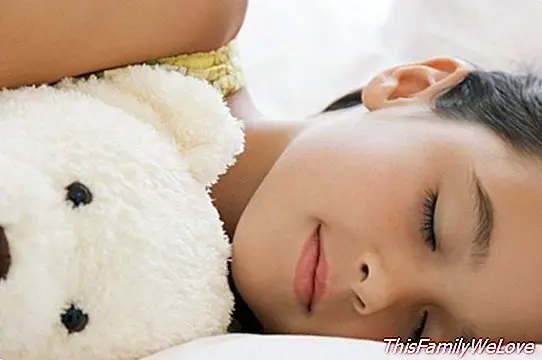Infant apnea, how to treat snoring of children?

Some small children snore and, normally, the parents who detect it tend to think that it is because of a cold or excess of snot in the nostrils. However, there may be something more behind the snoring. In fact, snoring is the main symptom of a disorder called obstructive sleep apnea, so if there is a suspicion that the child may suffer from this disorder, you should take it to the doctor.
Children with apnea suffer interruptions of breathing during sleep, often during the night. These apneas are produced by increasing the size of the tonsils and adenoid tissue or vegetations, which, when inflamed, narrow the upper airway and even collapse intermittently during the night.
The incidence of this disorder is not clear but experts agree that infant apnea usually occurs in between 2% and 3% of children, with no difference between sexes.
What are the causes of the appearance of childhood apnea?
Infantile apnea is usually more frequent in pre-school age for the early time in which the development of the airway is, but there are conditions that predispose to suffer and may give clues to a possible onset of the disorder.
The main factors that can cause the appearance of infantile apnea are:
- Exaggerated growth of tonsils and adenoids
- Nasal obstruction
- Congenital malformations, as for example, in the case of children with Down syndrome
- Obesity
- Gastric reflux
- Neurological diseases
What are the symptoms of childhood apnea?
In addition to the aforementioned snoring, parents should be alert to detect if the child presents during the night pauses in breathing (apnea), restlessness in sleep, increased respiratory effort, mouth breathing, sweating, unusual postures, enuresis (uncontrolled urination) or alterations in dental development.
You can also detect some signs during the day, such as excessive and constant sleep, bruxism (tightening or grinding teeth), morning headaches, tiredness and drowsiness, aggression, hyperactivity, palate deformity, lack of attention or poor school performance .
In addition, nocturnal desaturations (lack of oxygen in the blood) that occur with this disorder are harmful to children because they are in full development. For example, there are investigations that point to cardiovascular anomalies linked to apneas, as well as to minors with high diastolic blood pressure and, even, experts who talk about delays in the growth of the child.
Treatments for children's apnea and snoring of children
As a surgical option, an adenotonsillectomy is performed, that is, the removal of the adenoids (vegetations) and the tonsils, which is the standard therapy and the most effective. It is an intervention that resolves respiratory problems and nocturnal symptoms in 75% of children without other disorders.
But there are other surgical procedures, such as:
- Maxillofacial Surgery, mainly for malformations, such as the characteristics of Down syndrome or alterations of the nasal septum
- Tracheotomy, which is used in very extreme cases and in which other interventions have failed
Non-surgical options to treat childhood apnea and snoring of children
When standard therapy is contraindicated or there is no improvement after the removal of the adenoids and tonsils, specialists can opt for a technique called continuous positive airway pressure (known as a device (CPAP), which is done with a compressor and a mask.
This therapy consists of applying an adequate and continuous pressure in the upper airways so that they remain always open, so that apneas are eliminated and snoring is reduced, making the child can breathe continuously and return to get a healthy sleep and repairman.
Also recommended are treatments against nasal congestion with corticosteroids or anticongestives; reeducate the child to have a good sleep hygiene, since the lack of sleep increases the blockage of the airway, or antacid drugs, such as inhibitors of the proton pump, in certain cases to reduce gastric acid.
Dr. Pablo Ortiz. Head of the Otorhinolaryngology Service of La Milagrosa Hospital in Madrid




